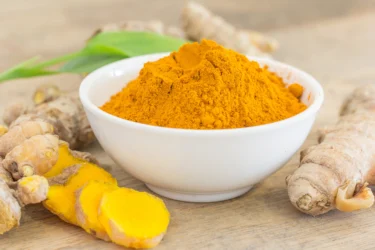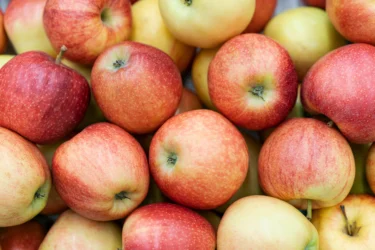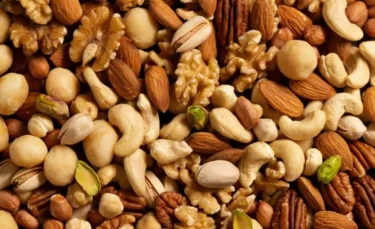Hibiscus, commonly called Roselle, belongs to the family Malvaceae. Hibiscus has over 300 species of flowering plants, and one of them is Hibiscus sabdariffa Linne. It is considered a multipurpose plant that may have various health benefits. Hibiscus is a perennial flowering plant grown throughout the seasons. The shrub originated in Africa and is planted worldwide in tropical and subtropical regions of India, China, Sudan, Malaysia, Taiwan and many other countries1,3. Hibiscus is cultivated for flowers, leaves, stems, seeds and roots. Hibiscus flowers and seed oils are widely used in food, cosmetic, and pharmaceutical formulations. Hibiscus has medicinal value, which has been referenced in Ayurveda and the Chinese medicine system. It is commonly called Lalambari or Gudhal in Hindi and Jaswandh in Marathi1,2.
Did you know?
Hibiscus has good nutritional value, which is given below
1. Fat:
2. Protein:
3. Vitamin C:
4. Calcium:
5. Iron:
6. Thiamine:
7. Riboflavin:
8. Niacin:
According to a study, regular consumption of hibiscus tea potentially lowered the blood pressure of a hypertensive patient as compared to the initial dose of the standard medication to lower the BP. So, hibiscus tea might be useful to bring down high BP with the avoidance of side effects of the medications used to treat hypertension12.
Dr. Siddharth Gupta, B.A.M.S, M.D (Ayu)
The whole plant of hibiscus, including the flower, stem, leaves, roots and seeds, has beneficial properties1.
In Egypt and Sudan, tea extracted from a part of the hibiscus flower is used as a refrigerant to lower body temperature. This preparation is known as karkade.
Dr. Rajeev Singh, BAMS
Hibiscus may have the following potential uses that might benefit various health conditions.

Hibiscus calyx juice might be beneficial for cancer. It may show an antiproliferative (reducing cancer cell spread) effect and has antioxidants which may perform free radical scavenging activities. The human cell line studies by Akim et al. 2011 have shown that hibiscus juice may cause cancer cell death. It might be considered that hibiscus may have potential uses in cancer-related diseases1,2. However, these studies are insufficient and require more human trials to support the potential use of hibiscus for cancer management in humans. Cancer is a serious medical condition and may require a qualified doctor for proper diagnosis and treatment. Therefore, seeking medical advice from a doctor before consuming hibiscus juice is preferable.

The efficacy of hibiscus in the management of insulin resistance and diabetes mellitus type 2 was studied in an animal model (Peng CH. et al. 2011). The results revealed a significant reduction in blood sugar levels. It also showed that the hibiscus extract might have anti-insulin resistance properties (shows an insulin-like response), decreasing high blood sugar and insulin levels4. These studies are insufficient as these studies are not done on humans. However, more studies on humans are required to back this claim. Therefore, it is essential to first speak to your concerned doctors and only have hibiscus as a herb.

Hibiscus leaves and flowers may have beneficial properties for hair health. It might be helpful in circulating the blood to hair follicles. The leaves and flowers of hibiscus contain natural pigments, antioxidants and vitamins that might be useful for hair health5,6. According to animal studies done by N. Adhirajan et al. 2003, the topical application of leaf extract and gentle rubbing action on the skin enhanced blood circulation; this may have some effect on hair growth. This study also mentions that the hibiscus leaf extract might directly impact hair follicles, improving hair condition5,7. These studies are carried out on animals and not done on humans. Hence, this information is insufficient. We require more studies on humans back above claim. So, it is essential to first speak to your concerned doctors and only use hibiscus for hair health.

Hibiscus plants are rich sources of mucilages, which are complex polysaccharides. The plant’s leaves were traditionally used to manage burning sensations and skin diseases. It may have a skin-soothing and moisturising effect. The hibiscus mucilage extract contains glycerine, which may show the highest skin moisturising effect8. There is a need for more studies to establish the positive effect of hibiscus on skin-related problems. Hibiscus should not be used to self-medicate without consulting a doctor.

Hibiscus may have potential uses in weight management. In animal studies conducted by Hansawasdi et al. 2003, hibiscus tea showed blocking of sugars and starch absorption, which might benefit weight loss. The ability of hibiscus extract to maintain weight might be due to its polyphenols and flavonoids, which might decrease the accumulation of fat and, thus, maintain body weight9. Unfortunately, these studies are insufficient and more studies are needed to support the potential use of hibiscus for weight loss management in humans. Therefore, consult a doctor before having hibiscus tea to keep a check on your weight.

The hibiscus extract may have a beneficial effect on kidneys. It might reduce serum triglycerides, total cholesterol, and lipids. hibiscus may be beneficial in lowering oxidative damage to kidneys. Consumption of hibiscus tea might produce a uricosuric effect that might be helpful in the excretion of uric acid through urine. This may benefit the deposition of calcium crystals in kidneys and thus, managing kidney stones10. The information is not sufficient and further studies are required to support the potential use of hibiscus to overcome kidney-related issues in humans.

Though there are studies showing the benefits of hibiscus in various health conditions, these are insufficient, and there is a need for further studies to establish the true scope of the benefits of hibiscus on human health. Every person may respond differently to hibiscus herbal preparations. Therefore, it is important to consult a doctor before using hibiscus for any medical condition.
Various parts of hibiscus are used in the following ways:
People should consult a doctor before taking hibiscus herbal supplements. We recommend that you do not change or discontinue your ongoing medications with herbal preparations without consulting a qualified physician.
Before consuming any herb, one should consult an Ayurvedic physician because the herbs may have specific side effects. The side effects of hibiscus are as follows:
However, if any such side effects are observed after having hibiscus, please get in touch with an Ayurvedic physician who advised you to have the herb. They will provide the appropriate treatment to overcome the side effects.
Also Read: Kokum (Garcinia Indica): Uses, Benefits, Side Effects and More!
People should take precautions while consuming Hibiscus extract, specifically for patients with heart and kidney-related diseases9,10.
Patients with high blood pressure receiving non-potassium-sparing diuretics (medicines that help excrete more urine and treat oedema) should take precautions. If the dose increases the prescribed amount, the diuretic effect of Hibiscus extract might exert pressure on the blood vessel, causing death caused by loss of heart function8,10.
Patients with kidney stones or kidney dysfunction should consult a doctor about using Hibiscus juice; consumption in high amounts may lead to high creatinine levels in the blood resulting in a loss of kidney functioning10.
There is insufficient information about the safe use of hibiscus for pregnant women. It is better to take doctor’s advice during this condition5.
The safety of taking hibiscus extract by lactating mothers is questionable because consumption during lactation might increase weight gain after birth and delay the onset of puberty in children. Lactating mothers should take advice from their doctor before using HIbiscus10. If you are suffering from any disease condition, or suffer from specific allergies, consult your doctor about what foods and vegetables to avoid. Also, avoid consuming hibiscus for any health condition without consulting with a doctor first.
Also Read: Pashanbhed (Bergenia Ligulata): Uses, Benefits, Side Effects & More!
Hibiscus juice, when administered together with any drug, may increase the side effects and toxicity and also lead to failure of the drug efficacy9. When taken together with acetaminophen (paracetamol), Hibiscus sweetened water extract may interact with acetaminophen, resulting in the loss of drug efficacy11. Also, suppose you are taking any medications. In that case, you need to consult with your doctor about the possible interactions of the drug with any vegetables or herbs. This will help you avoid possible interactions of medicines with any herb or vegetable.
Also Read: Ashta Choornam: Uses, Benefits and Side Effects By Dr. Rajeev Singh
Hibiscus Tea is a non-caffeinated herbal tea made from Hibiscus (Hibiscus sabdaraffa L.). The tea is made from the dried fruit of the flower. The tea is red and tastes like berries4.
Hibiscus tea is made from the fruit calyx of hibiscus. Wash and air dry some calyces, crush them or make a fine powder. To make tea add the crushed calyces to a tea bag and let it steep for a couple of minutes in boiling water; add sugar or lemon juice if required. The tea is ready to serve hot or cold and can be stored in the refrigerator4.
There are several common names for hibiscus, such as Roselle, Jamaican sorrel, and Indian sorrel in English. In Urdu, it is called Rozelle hemp. In Hindi, it is known as Lalambari1.
Mixing hibiscus powder with water and applying it to the hair might benefit hair health. Hibiscus consists of natural pigments, vitamins and antioxidants that may be useful for managing natural hair conditions6. However, this information is insufficient. You should consult a doctor before using hibiscus for hair.
Hibiscus contains vitamin C, B1 (thiamin), B3 (niacin) and B2 (riboflavin)4.
Disclaimer: The information provided here is for educational/awareness purposes only and is not intended to be a substitute for medical treatment by a healthcare professional and should not be relied upon to diagnose or treat any medical condition. The reader should consult a registered medical practitioner to determine the appropriateness of the information and before consuming any medication. PharmEasy does not provide any guarantee or warranty (express or implied) regarding the accuracy, adequacy, completeness, legality, reliability or usefulness of the information; and disclaims any liability arising thereof.
Links and product recommendations in the information provided here are advertisements of third-party products available on the website. PharmEasy does not make any representation on the accuracy or suitability of such products/services. Advertisements do not influence the editorial decisions or content. The information in this blog is subject to change without notice. The authors and administrators reserve the right to modify, add, or remove content without notification. It is your responsibility to review this disclaimer regularly for any changes.
Guduchi scientifically known as Tinospora cordifolia is a vital remedy in the Indian system of medicine. It belongs to the Menispermaceae family and has been used as a medicament since ancient times. It is also known as Giloy, Amrita, or Indian bitter. It is found in dense and dry forests all over India, growing over small trees and bushes at high altitudes. The stems, roots, and leaves of Guduchi all have medicinal properties1,2.
In the traditional Ayurveda classical textbooks, such as Charaka, Sushruta, and other texts, Guduchi is mentioned, under different names, as a medicine to treat a range of ailments1.
Did You Know?
The dried fully developed stem of Tinospora cordifolia constitutes the drug ‘Guduchi’. The therapeutic properties of Guduchi are:
I would like to highlight the anti-microbial activities of Guduchi. Guduchi extracts have been found to potentially fight against various bacteria, including E. coli and S. aureus. Thus, Guduchi might be your microbial-fighting squad ready to save the day5.
Dr. Rajeev Singh, BAMS
In ancient Ayurveda classical textbooks, it is mentioned to be useful in the treatment of leprosy, fever, jaundice, asthma, gout etc. This herb holds a special place for tribals across India. They used Guduchi for managing various diseases ranging from ear pain, dysentery, and cough to bone fractures, skin disease, and women’s issues1. Some of the benefits of Guduchi are described as follows:

Guduchi is useful for managing various bowel issues. One study1,3 has specifically shown that it is effective against amoebic infection of the digestive system. The consumption of powdered Guduchi mixed with amla or jaggery is an effective remedy for constipation. ‘Guduchi Satva’ the starch obtained from the stem of Guduchi, is especially beneficial for the digestive system.

Guduchi has been shown to reduce blood sugar levels, especially during fasting levels. The anti-diabetic effect is attributed to the various phytochemicals present in it. It regulates the blood sugar level by reducing oxidative stress, enhancing insulin release, and reducing the production and breakdown of glucose in the body. Guduchi is especially useful for type 2 diabetes1,3.

The stem of Guduchi helps in inflammation and arthritis. It also helps in alleviating joint pain and many other symptoms associated with arthritis. Rheumatoid arthritis can be managed by consuming powdered Guduchi stem mixed with ginger3.
In my observations, the Guduchi plant is like a medicine cabinet. People have been using it for ages, and even though the whole plant has medicinal properties, the stem is the star. It’s so special that it’s officially recognised by the Ayurvedic Pharmacopoeia of India. Why? Because it’s packed with alkaloids that make it extra powerful6.
Dr. Smita Barode, B.A.M.S, M.S.

I came across a fascinating study regarding Guduchi lotion. It has been found that Guduchi lotion might help treat scabies. Thus using it as a therapeutic option for scabies infections may be a valuable choice for managing scabies and promoting skin health4.
Dr. Siddharth Gupta, B.A.M.S, M.D (Ayu)
Guduchi can be used in the following ways:
You should always consult your Ayurvedic physician before consuming Guduchi for regular use. They will be the best person to prescribe you the correct form and dosage as per your health condition.
As far as the side effects of Guduchi are concerned, no significant study has been documented1. However, if you experience any adverse reactions to it immediately contact your Ayurvedic physician who has prescribed it to you. They will be able to treat you appropriately.
Also Read: Gokshuradi Guggulu: Uses, Benefits, Side Effects and more!
Guduchi is generally considered to be safe if it is taken in the recommended dosages1. However, general precautions have to be followed while consuming Guduchi.
Also Read: Eucalyptus Oil: Uses, Benefits, Side Effects By Dr. Smita Barode
Unfavorable reactions of Guduchi with any other drug have not been reported. However, evidence is insufficient to state that it is completely safe to use for all age groups and does not exhibit any drug interactions. Therefore, it is best to follow the advice of your Ayurvedic physician who has prescribed you this herb.
Also Read: Jatamansi (Spikenard): Uses, Benefits, Precautions & More!
One study2 has shown that 100 grams of dried Guduchi leaves have more protein, fiber, iron, calcium, carbohydrates, fats and energy as compared to the same quantity of fresh Guduchi leaves. But, fresh leaves of Guduchi had more beta-carotene and vitamin C as compared to the dried leaves.
There are no studies that report Guduchi to be useful for hair fall. You may consult your Ayurvedic physician for further advice.
No studies are available to check for the safety of Guduchi during pregnancy. It is best to consult your Ayurvedic physician before consuming Guduchi in any form during pregnancy.
Guduchi is generally considered to be safe if it is taken in the recommended dosage1.
Because of its various health benefits, it is said that it can be included in the diet of children as well as adults2. However, it is best to consult your child’s health care provider before including Guduchi in their diet.
In ancient Ayurvedic classical textbooks, there are several formulations mentioned that contain Guduchi as one of the major ingredients. These are given as follows:
Guduchyadi Churna
Guduchi Taila
Dashmoolarishtha
Sanjivani Vati
Kantakari Avaleha
Chyavanaprasha
Guduchi Satva
Brihat Guduchi Taila
Stanya Shodhana Kashaya Churana
Panchnimba Churna
Guduchi Ghrita
Amritaguggulu
Amritashtaka Churna1
Disclaimer: The information provided here is for educational/awareness purposes only and is not intended to be a substitute for medical treatment by a healthcare professional and should not be relied upon to diagnose or treat any medical condition. The reader should consult a registered medical practitioner to determine the appropriateness of the information and before consuming any medication. PharmEasy does not provide any guarantee or warranty (express or implied) regarding the accuracy, adequacy, completeness, legality, reliability or usefulness of the information; and disclaims any liability arising thereof.
Links and product recommendations in the information provided here are advertisements of third-party products available on the website. PharmEasy does not make any representation on the accuracy or suitability of such products/services. Advertisements do not influence the editorial decisions or content. The information in this blog is subject to change without notice. The authors and administrators reserve the right to modify, add, or remove content without notification. It is your responsibility to review this disclaimer regularly for any changes.
The liver is the largest organ of the human body. It helps process food and removes toxins from the body. Fatty liver disease is the buildup of excessive fats in the liver cells. Some amount of fat is normal for the liver, but if the fat content is more than 10% of the liver’s weight, you might be suffering from a fatty liver. A fatty liver might not present with any symptoms but can lead to complications like liver damage[1]. However, you can reverse or prevent fatty liver with some lifestyle changes. You can also use some natural home remedies to manage fatty liver.
Did you know?
When the liver cannot process and break down the fats in the body, the fat gets accumulated to cause fatty liver. Overusage of alcohol, malnutrition, and rapid weight loss can also cause fatty liver. The following can make you more prone to fatty liver disease:
However, people who do not have the conditions mentioned above can also develop a fatty liver. A fatty liver can be of two types, non-alcoholic fatty liver disease and alcoholic fatty liver disease.
Fatty liver might not present any symptoms. You may only find out about a fatty liver when you get tests done for other conditions. Fatty liver disease can affect your liver for years without causing any signs or symptoms. However, you might experience these symptoms as the disease gets worse.
The suggested home remedies may help you control the factors that might be contributing to your fatty liver.

Intake of aloe vera gel helps purify the blood and promote liver function. You need to take fresh aloe vera gel to take care of your fatty liver[3]. However, before using any herbal remedy, it is important to consult or notify your healthcare provider. You can also drink aloe vera juice to help with fatty liver.

You can take kutki root powder with warm water to manage the changes in the liver due to fatty liver disease[4]. It is important consult your doctor before using herbal remedies, as certain herbs can damage your liver.

Many doctors recommend losing weight to manage the fatty liver disease[5]. Losing weight may help you reduce the fat content in the liver, swelling and fibrosis (tissue damage). It is important to lose weight safely; you should lose no more than half to one kilogram of weight in a week. You can start with regular exercise, which mayhelp you lose weight and reduce fat.

To manage the alcoholic fatty liver disease, you should try quitting alcohol. Alcoholic fatty liver disease is caused due to over-usage of alcohol. Reducing the use of alcohol might help you manage and reverse fatty liver[6]. If you face difficulty quitting alcohol, you might get help from a therapist or take part in an alcohol recovery program.

Fats are high in calories. Consuming more fats can increase your chances of developing obesity. Obesity is one of the risk factors for fatty liver[7]. It is advised to avoid saturated fats and trans fats and add unsaturated fats to your diet, such as omega 3 fatty acids, to get rid of fatty liver disease. Fish is one of the chief sources of omega 3 fatty acids. You can try fish like herring, salmon and mackerel to get sufficient omega 3 fatty acids. Seeds like flaxseeds and chia seeds also contain plenty of omega 3.

Fruits and vegetables are foods with a low glycemic index. Foods with a low glycemic index are less likely to cause a spike in your blood sugar levels. Eating fruits and vegetables will keep your blood sugar under control and help you manage the fatty liver disease.
You need to avoid consuming sugar in high amounts. Managing blood sugar levels may help to deal with fatty liver disease. Avoid foods with a high glycemic index, for example, white rice, white bread, and potatoes. Consumption of foods and drinks that contain high amounts of sugar, especially fructose, should be avoided. Fructose is a simple sugar used to sweeten soft drinks, sports drinks, and sweetened juices and drinks. You also need to consume less sugar at home. The table sugar, scientifically called sucrose, is rapidly converted to fructose and glucose during digestion.
Involving fibre in your diet has numerous health benefits, like keeping the cholesterol under control, keeping the body weight under control, and stabilising the blood glucose levels. Some important sources of dietary fibre include nuts, seeds, wholegrain foods, oats, barley, lentils, peas, and soy. Keeping the body weight under control may help you manage the fatty liver disease and reduce other complications.
Remain vigilant about monitoring your liver enzyme levels in regular blood test reports. Abnormal levels of liver enzymes can serve as indicators of liver conditions such as fatty liver disease. If you notice any irregularities, consult a doctor, who may also recommend additional imaging tests such as liver ultrasonography or liver fibroscan, if necessary. Early detection can help reverse the condition, if not addressed timely the changes may become irreversible leading to serious complications
Dr. Arpit Verma, MBBS, MD (Pharmacology)
Also Read: Signs You May Have Liver Stress
In most cases of fatty liver, there are no symptoms involved; because of this, it becomes difficult to diagnose this disease. You might not experience any symptoms unless the disease has progressed to liver cirrhosis (a late-stage liver disease in which healthy liver tissue gets replaced with scar tissue). If you notice:
You should immediately contact your health care provider.
Also Read: Simple Home Remedies for Frequent Urination
Fatty liver is the condition in which fat builds up in the liver cells. You might not notice any symptoms associated with fatty liver unless the disease has progressed to a severe condition called cirrhosis. One good news is that you can manage fatty liver by taking caution and losing weight. You can also make use of home remedies like aloe vera or kutki to manage fatty liver disease. Exercising and following a proper diet are some other ways to manage fatty liver.
Fatty liver is difficult to diagnose, but if you notice symptoms like nausea, abdominal pain, swollen legs and abdomen and mental confusion accompanied by weakness, you should contact your doctor immediately.
Also Read: What is Hepatitis A? Causes, Symptoms, and How It Spreads
The liver can repair itself. Therefore, if you can avoid the factors causing your fatty liver, you can reverse fatty liver disease. For this, it is important that you consult your doctor and get proper guidance.
Maintaining your overall health is the best way to prevent fatty liver disease. Do things that keep you healthy, such as maintaining a healthy body weight, exercising regularly, and limiting alcohol consumption.
People with non-alcoholic fatty liver disease can develop complications like liver cirrhosis and liver cancer. Liver cirrhosis can lead to liver failure, which requires a liver transplant. Those suffering from alcoholic fatty liver disease can develop complications like alcoholic hepatitis and cirrhosis.
Herbal remedies to manage fatty liver include aloe vera gel and kutki root. Intake of aloe vera gel enhances liver functions, whereas kutki root powder with warm water can help manage fatty liver. Herbal remedies can also cause damage to the liver.3 Therefore, it is important that you consult your healthcare provider before using these herbal remedies. Your doctor can guide you about the possible treatments for fatty liver.
Being overweight is one of the factors that puts you at high risk of developing fatty liver disease. You need to maintain a healthy body weight to stay healthy.
Liver cirrhosis is the result of severe damage to the liver. Fatty liver disease, if left untreated, can progress to liver cirrhosis. The healthy tissues of the liver are replaced by hard scar tissues. Liver cirrhosis can slow down or completely block liver functions. It can progress to liver cancer or liver failure.
Disclaimer: The information provided here is for educational/awareness purposes only and is not intended to be a substitute for medical treatment by a healthcare professional and should not be relied upon to diagnose or treat any medical condition. The reader should consult a registered medical practitioner to determine the appropriateness of the information and before consuming any medication. PharmEasy does not provide any guarantee or warranty (express or implied) regarding the accuracy, adequacy, completeness, legality, reliability or usefulness of the information; and disclaims any liability arising thereof.
Varicose veins, also known as spider veins, varicose or varicosities, are twisted or enlarged veins, occurring mainly in the legs. Varicose veins occur when the veins become dilated, enlarged and overfilled with blood. They tend to be bluish purple or red in colour. Varicose veins is a common condition, especially among women. Around 25 to 30 per cent of adults suffer from varicose veins, especially in the lower legs1.
Regular veins have one-way valves that are designed to block blood from flowing backwards. When regular valves fail to perform as they are supposed to, blood begins to collect in the veins rather than continuing toward your heart. This causes the veins to enlarge. Varicose veins mostly occur in the lower leg area because these veins are the farthest from the heart with gravity making it more difficult for the blood to flow upwards2.
With blood accumulating in your veins, varicose may cause discomfort, inflammation and pain in the affected area. So, this condition requires proper diagnosis and management. However, in addition to that, your doctor may recommend certain changes in diet and food to help you temporarily deal with the discomfort.
Some of the food habit changes and additions you can inculcate in your diet are as follows:

Beetroots contain a naturally occurring compound called betacyanin. This compound is what majorly contributes to the red colour of beets. Betacyanin is a phytochemical compound that lowers the levels of homocysteine (an amino acid that forms proteins) in the body3. Having high levels of homocysteine can damage blood vessels and lead to blood clots4. Thus, beets can help improve the condition of varicose veins.

For many centuries, ginger has been used in Indian households as a spice as well as for its medicinal properties. It may help deal with the symptoms of varicose because it aids in increasing blood circulation and dissolving fibrin in the blood vessels5.

Since ancient times, turmeric has been used in Ayurvedic and traditional Chinese medicine to unclog blood vessels and promote effective blood circulation. Curcumin, an active ingredient in turmeric, increases the production of nitric oxide, which in turn facilitates better blood flow and circulation6

Fruits like apples, bananas and pears are high in fibre content. High fibre fruits lower the chances of inflammation and help with your overall health. Apples are high in rutin, a powerful antioxidant compound that helps to keep veins healthy.

Red and purple grapes are loaded with flavonoids and vitamins along with oligomeric proanthocyanidins, also known as OPCs, which some researchers believe could lessen vein and leg swelling8.

Like apples, cherries are loaded with rutin. Rutin is a flavonoid that helps lower cholesterol and blood pressure, as well as keep your veins healthy. In addition, this flavonoid is also anti-inflammatory, an excellent source of antioxidants and lowers the chance of blood clots9.

Nuts are rich in niacin and vitamin B3, which are essential nutrients for blood flow and help improve blood circulation10. Hemp, sunflower, flax and chia seeds are some foods rich in omega 3 fatty acids and fibre. They are also a good source of anti-inflammatory proteins that help in removing cholesterol and promoting blood flow quality11.

Leafy green vegetables such as kale and lettuce are excellent sources of magnesium, a mineral that plays a key role when it comes to managing blood circulation and blood flow12.

Some fats are good for your health and your veins, such as the fats found in avocado13. Avocados are also a great source of vitamins C and E, potassium and magnesium, overall helping in improved blood circulation.

Cinnamon is a powerful spice known for regulating blood sugar levels and insulin resistance in type 2 diabetes. Other benefits of cinnamon include the ability to increase blood flow and promote circulation. Cinnamon helps blood vessels to dilate and widen, which makes it easier for blood to flow throughout your body5.
While in traditional medicine, these foods have been recommended to be beneficial for varicose veins, there is limited scientific evidence to support their use. Nonetheless, they are worth a try. However, please remember that these should only be an adjunct to medical therapy and never a replacement. Also, if you have any other medical issue like diabetes, it’s best to discuss with your doctor before including any new food item in your routine diet.
Flavonoid-rich diets such as green leafy vegetables and grapes may aid in the reduction of varicose veins in some people. Flavonoids may increase blood flow, stopping the blood from pooling in the veins and aiding in its movement. They may also relax blood vessels and lower the blood pressure in the arteries, which may lessen the occurrence of varicose veins16.
Dr. Siddharth Gupta, B.A.M.S, M.D (Ayu)
The following list of foods to be avoided with varicose veins14,15:
Researchers have found that grape seed extract from the plant Vitis vinifera may help relieve swelling in the lower legs and other symptoms of varicose veins. However, I suggest grape seed extract should be taken only after the recommendation from the doctor as it may interact with some drugs like blood thinners17.
Dr. Rajeev Singh, BAMS
When it comes to varicose veins, it is best to consume homemade food items with the above ingredients. You must follow a healthy diet that is per your doctor’s suggestions and body needs. Here are some interesting recipes you may try on:
Blood vessels transport blood throughout the body, their health is essential for proper blood flow and overall circulation. Although medical treatment remains the cornerstone of management of blood vessel conditions like varicose veins, it’s a good idea to include food items that are beneficial for proper blood flow and avoid those that may harm. When you eat healthy foods and indulge in exercises that improve circulation, you are allowing your cardiovascular health to remain healthy and lessen your risk of problems like varicose veins.
Varicose veins are caused by increased blood flow towards the veins of the legs. The blood moves towards the heart by one-way valves in the veins. When the valves become weakened or damaged, blood can collect in the veins, causing them to swell.
If varicose veins are left untreated, the veins continue to get more damaged and there is increased pain and swelling. It may further lead to soreness and ulceration of the skin.
Some healthcare professionals believe it could be because you experienced an injury to that side of the body which caused damage to the veins or the valves of the veins.
According to some specialists, in very extreme cases, varicose veins might affect the arterial system of the heart, but this generally does not happen.
Disclaimer: The information provided here is for educational/awareness purposes only and is not intended to be a substitute for medical treatment by a healthcare professional and should not be relied upon to diagnose or treat any medical condition. The reader should consult a registered medical practitioner to determine the appropriateness of the information and before consuming any medication. PharmEasy does not provide any guarantee or warranty (express or implied) regarding the accuracy, adequacy, completeness, legality, reliability or usefulness of the information; and disclaims any liability arising thereof.
Links and product recommendations in the information provided here are advertisements of third-party products available on the website. PharmEasy does not make any representation on the accuracy or suitability of such products/services. Advertisements do not influence the editorial decisions or content. The information in this blog is subject to change without notice. The authors and administrators reserve the right to modify, add, or remove content without notification. It is your responsibility to review this disclaimer regularly for any changes.
Have you noticed thin, scar-like lines on your mother’s tummy? These are probably stretch marks. Can we call them ”marks of motherhood”? I suppose we may, as they are extremely common during pregnancy, affecting nearly 50-90% of pregnant women2. But they also occur in certain other conditions as well, such as in people who have gained excessive weight, in bodybuilders, in certain diseases, or due to the use of steroids. These scars, or stretch marks, are medically called striae distensae (SD) or Striae gravidarum1.
There are two types of stretch marks, those that appear red, are flat, stretched, and at right angles to the tension in the skin; these are called striae rubrae3. These are temporary. The other type appears pale, faded, and wrinkled, and is known as striae albae; these are permanent stretch marks.2 Even though you have all the reasons to love them and should be flaunting them, it’s not wrong to want to lighten them. How? Let’s find out.
Did you know?
Stretch marks appear when there is rapid stretching of the skin. This may occur due to several reasons:
Over time, many stretch marks improve. The best time to perform a treatment is once the stretch marks have stabilised. Many creams for stretch marks are promoted on the internet. The public should be made aware that the efficacy is very limited. Newer lasers and radiofrequency treatments hold promise as they try to modify the vascularity and the collagen and perhaps the elastin. Again, there is no clear leader among the many lasers that are promoted. The needle radiofrequency seems to show promise as, in theory, the deeper delivery of the energy may allow “shrinkage” of the stretch marks in all directions, thereby improving the overall appearance.
Dr. M.G. Kartheeka, MBBS, MD
Stretch marks look like lines on the skin. They commonly appear as bands, stripes, or lines, irregularly on the stretched skin. These lines may be red, glossy, thinned out, and parallel to each other. They are initially red in colour but later become white, pale, and wrinkled, like a scar. They are generally seen on the breasts, hips, thighs, abdomen, and flanks.
Stretch marks often disappear after the cause for the stretching of the skin disappears and there is no specific care needed for them. Research done on the agents that can be applied over the stretch marks for their treatment is limited. However, there are a few home remedies listed below that may help reduce their appearance:

The outer layer of the aloe vera leaf is removed and the inner gel is sliced out and applied on the stretch marks4. This can be washed off after 2-3 hours.

Coconut oil is used for the removal and lightening of stretch marks by many people. Virgin coconut oil is used to gently massage the area where stretch marks are noticed. However, there is not much evidence as to why and how this works. One hypothesis as to why it might work is that coconut oil hydrates the skin deeply and makes it more elastic, allowing it to stretch easily, without scarring.

Commonly used in Korean beauty products, it is an herb scientifically called Centella Asiatica. The exact mechanism of its action is unclear, but it is said to stimulate the cells that produce collagen (a protein providing elasticity to the skin). It stops the action of the hormone glucocorticoid, which destroys collagen in the skin5.

It is hypothesised that hyaluronic acid protects the cells producing collagen, i.e. fibroblasts, from getting destroyed under tension and pressure like the condition in which stretch marks appear. Though the exact mechanism is not yet known, it is widely used for the treatment of stretch marks.4 Hyaluronic acid can be applied directly to the skin. It is also present in various creams, lotions, and other skincare products. There is a need for further research to prove its beneficial effects5.

Vitamin A is a vitamin necessary to maintain skin health. It is thus present in a multitude of skincare products by the name of retinol. Tretinoin is a retinoid (a form of Vitamin A) that is used for treating stretch marks. It was found in studies that the use of retinol makes the stretch marks appear less severe and smaller.4 However, there is a need for more research in this area. A word of caution: Oral vitamin A should not be used during pregnancy, while lactating or even while you’re trying to get pregnant, as it is known to cause harmful effects. Sometimes it can cause skin irritation too.

Olive oil is rich in vitamin E and moisturises the skin. A few studies have found that application of olive oil regularly during pregnancy reduced the occurrence of stretch marks, while other oils in the study showed no such effect. Still, the role of olive oil in the reduction of stretch marks remains unclear, demanding more research in this area5.

You can boil a couple of tablespoons of black tea in water and dissolve a little salt in it. You can use this solution to apply the stretch marks after it cools down. The preparation is to be applied until the stretch marks completely disappear. This remedy is another one with little scientific evidence, but it is used by many.

Potatoes are used to lighten dark circles under the eye and are well-known for lightening stretch marks. In fact, potato skin and juice are touted to be useful even to reduce scars due to burns. The exact mechanism and mode of action are little known, but it has been found useful by many people.

The egg yolk is separated from the egg whites and the whites can then be applied directly onto the stretch marks. However, more studies need to be conducted to understand the exact mechanism of action of this complete food.
Also Read: Home Remedies To Cure Bad Breath Naturally
It is advised to seek medical attention by consulting your doctor or healthcare provider when you notice the appearance of stretch marks. A doctor will take a detailed history, conduct a thorough physical examination, and then guide you regarding the correct treatment for your specific condition.
Stretch marks occur due to the stretching of the skin. They commonly occur during pregnancy, weight gain, or due to a medical condition that might cause the skin to lose its elasticity. The red stretch marks are temporary, while the white ones are permanent. The red ones evolve into white stretch marks over time. There is very little evidence about the usage of products (natural or artificial) for application on the skin to reverse these stretch marks. However, there are a few home remedies that can be used to lighten these scar-like lines on our bodies.
Also Read: Effective Home Remedies for Scabies
Appearance of stretch marks is normal in cases of pregnancy, weight gain, and puberty. If you notice an unexplained appearance of stretch marks, a doctor should be consulted and the reason should be ascertained.
No, stretch marks appear when there is stretching of skin, as seen during pregnancy, rapid growth during puberty, in bodybuilders with bulky muscles, and due to weight gain. There is no evidence or connection between high cholesterol and stretch marks.
Striae rubrae are a type of stretch mark that appears red in colour and is usually temporary. If you notice the appearance of stretch marks without any explainable cause, you should seek medical attention.
Hyaluronic acid is used in various creams and gels for its beneficial effects on the skin. It might have fibroblast (collagen-producing cells) stimulating activity that helps restore skin elasticity and reduces the appearance of stretch marks.
No, there are no reports stating the effect of stretch marks on the liver.
No, there is no evidence showing the development of stretch marks into cancer.
1. Brennan M, Young G, Devane D. Topical preparations for preventing stretch marks in pregnancy. Cochrane Database Syst Rev. 2012 Nov 14;11(11):CD000066. doi: 10.1002/14651858.CD000066.pub2. PMID: 23152199; PMCID: PMC10001689. Available from: https://pmc.ncbi.nlm.nih.gov/articles/PMC10001689/
2. Osman H, Rubeiz N, Tamim H, Nassar AH. Risk factors for the development of striae gravidarum. Am J Obstet Gynecol. 2007 Jan;196(1):62.e1-5. doi: 10.1016/j.ajog.2006.08.044. PMID: 17240237; PMCID: PMC1913631. Available from: https://pmc.ncbi.nlm.nih.gov/articles/PMC1913631/
3. Mikes BA, Oakley AM, Patel BC. Striae Distensae. 2025 May 19. In: StatPearls [Internet]. Treasure Island (FL): StatPearls Publishing; 2025 Jan–. PMID: 28613776. Available from: https://pubmed.ncbi.nlm.nih.gov/28613776/
4. Hajhashemi M, Rafieian M, Rouhi Boroujeni HA, Miraj S, Memarian S, Keivani A, Haghollahi F. The effect of Aloe vera gel and sweet almond oil on striae gravidarum in nulliparous women. J Matern Fetal Neonatal Med. 2018 Jul;31(13):1703-1708. doi: 10.1080/14767058.2017.1325865. Epub 2017 May 19. PMID: 28521546. Available from: https://pubmed.ncbi.nlm.nih.gov/28521546/
5. American Academy of Dermatology. Stretch marks: Why they appear and how to get rid of them [Internet]. Schaumburg (IL): AAD; [cited 2025 Sep 23]. Available from: https://www.aad.org/public/cosmetic/scars-stretch-marks/stretch-marks-why-appear
Disclaimer: The information provided here is for educational/awareness purposes only and is not intended to be a substitute for medical treatment by a healthcare professional and should not be relied upon to diagnose or treat any medical condition. The reader should consult a registered medical practitioner to determine the appropriateness of the information and before consuming any medication. PharmEasy does not provide any guarantee or warranty (express or implied) regarding the accuracy, adequacy, completeness, legality, reliability or usefulness of the information; and disclaims any liability arising thereof.
Links and product recommendations in the information provided here are advertisements of third-party products available on the website. PharmEasy does not make any representation on the accuracy or suitability of such products/services. Advertisements do not influence the editorial decisions or content. The information in this blog is subject to change without notice. The authors and administrators reserve the right to modify, add, or remove content without notification. It is your responsibility to review this disclaimer regularly for any changes.
Azadirachta indica, commonly known as neem in India, is also called ‘Margosa’ or ‘Indian Lilac’. It is the most versatile, diverse (different varieties of species) tree in the tropical region (hot regions), that might have medicinal potential. Neem has a lot of beneficial non-wood products like flowers, leaves, fruits, bark, gum, oil, seeds, and neem cake (residue left over after oil is pressed from neem seeds). It is thus considered the most useful tree in comparison to all other tree species1.
In Sanskrit neem is called ‘arista’ which means ‘perfect, complete and imperishable1. ‘Nimba’ is the Sanskrit name of neem and is derived from the term ‘nimbati swasthyamdadati’ which means ‘to give good health’. Even the Persians have named neem as ‘Azad- Darakth- E- Hind’ which implies ‘Free tree of India’. It shows remarkable potential in the fields of environment protection, pest management, and medicine. Neem might be a natural source of pesticides, insecticides, and agrochemicals apart from having potential health uses1.
Leaf meals from some tropical legumes have been explored due to the need to look for alternative sources of food for humans and feed for livestock. Neem leaf meal was analysed in a study that found that it has 18.10% crude protein and relatively high crude fibre of about 15-56%. Though the gross energy content was high at 4.16 kcal/g, the metabolizable energy is low2.
Non-ruminant animals might also benefit from leaf meal from neem plants as a source of protein, vitamins, minerals, and carotenoids2.
Neem, due to its potential properties, has been used in Ayurvedic medicine for more than 4000 years. Neem products have several properties and might have applications in various fields making neem a green treasure.
Did you know ?

Studies have shown that a chemical found in neem, called nimbidin, might possess anti-inflammatory and anti-arthritic activity. Nimbidin might help inhibit the inflammatory action of macrophages and neutrophils. Neem might aid in lowering inflammation and might help reduce associated swelling and pain. It might also be helpful for rheumatoid arthritis, a disease characterised by inflammation and pain in the joints and muscles due to auto-immune reactions3. However, more research is required. Kindly consult a doctor.


Flavonoids and other chemicals found in neem might play a role against the worsening of cancer. Several studies4 suggest that high flavonoids might help stop the growth of cancer. Neem and its extracts have a potential action against a wide range of cancer cells in humans that include cancers of the skin, breast, lung, oral, stomach, liver, colon, and prostate3. However, much more extensive research is required to prove its potential use. Moreover, cancer is a serious condition and you should consult a qualified doctor for its diagnosis and treatment.
Neem has a compound, furanolactone, which is well recognised for its ability to reduce the generation of inflammation and to anaesthetize pain. From my experience, neem may alleviate pain associated with cancer and diabetes5.
Dr. Rajeev Singh, BAMS

Studies have recently started to focus on the hypoglycaemic (lowering blood sugar) effect of neem. The exact mechanism is not clear, however, the effects are visible3. Please consult a doctor, as conditions like diabetes are to be diagnosed and treated by a doctor.

Neem might have some effect on liver protection, which in turn might aid the purification of blood. Neem leaf might help reduce liver damage occurring due to chemicals by stabilising serum marker enzyme levels and by increasing antioxidant levels, like those present in natural carotenoids, vitamin E and C. These antioxidants might help to neutralize free radicals and may inhibit damage3. However, more research is required. Kindly consult a doctor.
Let me tell you a secret! While highlighting the numerous health advantages of neem components and extracts, neem may lead to few problems too! I have read an article that says over-consumption of neem or its extracts might have ill health effects, notably on the liver and kidneys. From my perspective, the consumption of neem might be done only after the physician’s consent5.
Dr. Siddharth Gupta, B.A.M.S, M.D (Ayu)

The most important potential use of neem may be due to its immune-stimulating property. It might help both the cell-mediated and lymphocytic immune systems, including ”Killer T” cells. These cells might help to kill viruses, other microbes, etc. by releasing toxic chemicals into them3. However, more research is required to be sure.

The antioxidants present in neem might show brain-protective properties. In stroke patients, neem might help against brain damage. It might help the brain by raising the levels of ascorbic acid (Vitamin C) and might help in a process called lipid peroxidation, which might be helpful3. However, more research is required to ascertain such claims.

In rural India, it is still used to clean teeth. The potential antimicrobial qualities of neem might aid gingivitis and plaque reduction. Antiseptic properties might be present in neem twigs which might help with maintaining oral hygiene3. However, more studies are required to prove such potential uses, for any concern related to oral care, please consult a dentist.
For ages, neem twigs proved beneficial for oral hygiene as a tooth cleaner, a pain cure, and mouth deodorant. From my perspective, due to its antibacterial, anti-candidal, anti-cariogenic, anti-gingivitis, and anti-plaque action, neem may aid in dental problems. In place of sodium hypochlorite, its antibacterial and antioxidant qualities make it a potential root canal irrigant used during root canal treatment6.
Dr. Smita Barode, B.A.M.S, M.S.

Studies have shown that neem bark might reduce the secretion of acid in the stomach by 77% and might regulate stomach secretion volume by 63%. It might reduce stomach enzyme pepsin activity by 50% and may reduce damage to stomach tissue further owing to its potential anti-inflammatory properties3. However, more research is required to back up such claims. Please ensure to consult a doctor. Do not self-medicate.

Blood clots, excessive cholesterol levels, high blood pressure and irregular heartbeat (arrhythmic heart action) are all major causes of heart attacks. Neem leaf extracts might have the potential to help lower blood pressure, may reduce clotting and strain on the circulatory system, may help with irregular heartbeats and might lower levels of bad cholesterol3,4. However, more studies are required to prove the potential uses of neem for the heart. Heart-related problems should be addressed immediately by a qualified doctor, please do not try to self-medicate using herbs.

Malaria is a common disease of the tropical climate. Neem leaf extract might be helpful against the malaria virus indirectly as it may have an effect on parasites that carry the virus. Dried neem leaves are burnt and used as a mosquito repellent3. However, more concrete evidence is required to validate its effectiveness. Malaria should be diagnosed and treated by a doctor, so kindly consult a doctor.

Neem might also be helpful for skin problems like vitiligo, an autoimmune disorder that causes the skin to lose colour and turn white. However, more research is required to prove the potential use of neem for vitiligo. Kindly consult a doctor for its proper diagnosis and treatment3.
Though there are studies that show the benefits of herbs in various conditions, these are insufficient and there is a need for further studies to establish the true extent of the benefits of herbs like neem on human health.
Neem might be of potential use in several forms like neem oil, cake, twigs for oral care, leaf extract, extract from flowers and many other products derived from the neem tree1.
You must consult your Ayurvedic physician for advice on the form and dosage as per your health condition.
You must consult a qualified doctor before taking any herbal supplements. Do not discontinue or replace an ongoing treatment of modern medicine with an ayurvedic/herbal preparation without consulting a qualified doctor.
Every herb may react differently in individuals. More research is required to state the side effects of neem. However, we must consult the doctor before using the neem tree or its parts. Kindly do not self-medicate, alter, replace or discontinue any treatment by yourself.
General precautions must be followed if we wish to consume neem. Moreover, it must be prescribed by an Ayurvedic doctor who will understand your conditions and will be able to guide you in the best possible way about dosage and form.
Pregnant women must use neem products with caution, and they should consult their doctor before consuming it in any form.
Before using neem for children, the elderly and breastfeeding moms, please consult your Ayurvedic physician.
There is a lack of studies regarding the interactions of neem with other drugs. Therefore, there is a need for more research on this subject. However, you should consult a doctor before using neem and its parts. You should make sure to disclose all the current medication being used.
Neem might be helpful against head lice. It is a common practice to apply neem all over the hair to kill head lice and their eggs as it might be helpful3. However, more research is required. Please consult a doctor before using it.
Pregnant women must consult their doctor before using neem tree or its parts in any form. The effects of neem on pregnant women are not known fully and require further research.
Research has demonstrated the potential use of neem root or leaf extract as an insect repellent against black flies. Neem oil cream to the skin might appear to secure against certain kinds of mosquitos4. However, more research is required.
Neem might have potential use for the livestock in many ways. It might become popular as an animal feed substitute. Every part of the neem tree such as bark, fruits, leaves, gum and seeds has potential use for animal problems. Neem leaves may act as an antiviral agent against several viral infections in livestock. A hot infusion of leaves might help with bruises, swollen glands and sprains1.
In Telangana, Andhra Pradesh and Karnataka, neem blossoms are being used on the occasion of Ugadi day in ‘Ugadi Pachhadi’ (soup-like pickle) to mark Telugu and Kannada new year. Demonstrates the interdependence of joy and sorrow and to be able to take both harsh and sweet things throughout life4.
Disclaimer: The information provided here is for educational/awareness purposes only and is not intended to be a substitute for medical treatment by a healthcare professional and should not be relied upon to diagnose or treat any medical condition. The reader should consult a registered medical practitioner to determine the appropriateness of the information and before consuming any medication. PharmEasy does not provide any guarantee or warranty (express or implied) regarding the accuracy, adequacy, completeness, legality, reliability or usefulness of the information; and disclaims any liability arising thereof.
Links and product recommendations in the information provided here are advertisements of third-party products available on the website. PharmEasy does not make any representation on the accuracy or suitability of such products/services. Advertisements do not influence the editorial decisions or content. The information in this blog is subject to change without notice. The authors and administrators reserve the right to modify, add, or remove content without notification. It is your responsibility to review this disclaimer regularly for any changes.
Pudina, scientifically known as Mentha spicata, is an aromatic herb belonging to the mint family (Lamiaceae). It is called Spearmint in English and is widely used in Indian and Italian cooking. It is one of the best mints used for flavour. The herb originated in Europe1. Fresh and dried plant and essential oils derived from Pudina are widely used in the food, cosmetic, confectionery, chewing gum, toothpaste, and pharmaceutical industries2. It is grown worldwide for commercial uses as a flavouring agent for food and to be used in medicines3. The plant is commonly called Pudina in Hindi4.
Pudina has good nutritional value owing to the number of dietary components present. Moreover, it is a good source of many micronutrients and macronutrients.
It also contains vitamins like:
Did you know?
Pudina may exhibit the following therapeutic properties:
Because of the various properties of pudina, it may show potential uses against different disease conditions. Some of the potential uses of pudina are given below.
Pudina is recommended as per traditional Iranian medicine to be included in daily diets to avoid flatulence (gas build-up in the stomach). Pudina may also help clean up toxins from the gut (these are the end products of gastric digestion) and strengthen the stomach. It may also be effective in dyspepsia (indigestion) symptoms such as appetite, bloating, belching (burping), and nausea5. A decoction of pudina leaves may be used to relieve common digestive problems3. However, if you suffer from digestive issues, you should consult your healthcare provider and get a proper diagnosis and treatment.
Administration of pudina extract showed a significant reduction in blood glucose levels during animal studies3. When tested on diabetic rats during animal trials, pudina leaf extract showed a remarkable improvement in blood glucose and cholesterol levels. These antidiabetic properties of pudina have been observed in animal trials, and more studies are required to consolidate the use of pudina in humans. If you have diabetes, you must follow your doctor’s advice and prescribed treatment.
It’s important to exercise caution when consuming Mentha piperita (peppermint) and spearmint teas, as excessive intake may lead to iron depletion and potentially result in anaemia. These teas have the potential to interfere with iron absorption in the body, which can be detrimental to your overall health7.
Dr. Rajeev Singh, BAMS
In laboratory studies3, the extract of pudina leaves showed strong anticancer activity against various cancer cells. In lab studies, extracts from pudina leaves slowed the growth of breast and mouth cancer cells. However, more studies are required to support the use of pudina during cancer. Therefore, you are advised not to use pudina or other herbs to manage disease conditions.
The essential oil of pudina proved to be effective as an anti-inflammatory and analgesic (pain reliever) agent in animal trials3, indicating that pudina may help reduce inflammation and swelling and ease the pain. However, these properties have been observed during animal trials. More studies are required to support using Pudina for inflammation and pain.
Be careful when using or inhaling menthol, as it can have adverse effects on certain individuals. In sensitive individuals, menthol inhalation may lead to apnoea (temporary pause in breathing) and laryngospasm (sudden closure of the vocal cords). This can initially create discomfort and if left unattended, it can worsen to a life-threatening emergency7!
Dr. Smita Barode, B.A.M.S, M.S.
Pudina extract showed learning and memory-enhancing benefits in animal and human studies3. Oral administration of pudina extract improved mood, sleep quality and working memory. It has also been reported that pudina improves sleep, mood, learning and memory in men and women having age-related memory impairment3. However, more studies are required to understand the full extent of the effects of pudina on the brain. Therefore, if you experience any problems related to learning, memory, and sleep quality, you need to seek medical help.
Based on my observations, it is possible that pudina (mint) may possess antiyeast properties. This means that it has the potential to inhibit the growth or activity of yeast organisms. The specific components present in pudina may help to disrupt the yeast’s normal functioning, thereby reducing its ability to cause infections or overgrowth7.
Dr. Siddharth Gupta, B.A.M.S, M.D (Ayu)
Though some studies show the benefits of pudina in various conditions, these are insufficient and there is a need for further studies to establish the true extent of the benefits of pudina on human health.
Pudina leaves are widely used for culinary purposes such as
You must consult a qualified doctor before taking pudina or any herbal supplements. Likewise, do not discontinue or replace an ongoing treatment of modern medicine with an ayurvedic/herbal preparation without consulting a qualified doctor.
Pudina and its essential oils are safe when consumed in amounts like those found in foods. Some of the side effects associated with pudina use are given below.
Before using pudina for its health effects, you need to consult your healthcare provider and get a proper diagnosis and treatment. It’ll help you avoid any unwanted side effects.
Some general precautions associated with pudina use are given below.
Pudina is possibly unsafe to consume during pregnancy. High doses may cause uterine damage6.
There is insufficient reliable information to determine whether pudina is safe to use while breastfeeding. To be safe, avoid using higher amounts of Pudina6.
Eating a large amount of Pudina might worsen existing kidney damage. Pudina tea might increase kidney damage in people, so it’s best to avoid it unless recommended by your Ayurvedic physician6.
Pudina tea might increase liver damage. So, using large amounts of pudina tea might worsen liver disease.
If you want to take pudina for any of its properties, make sure to consult a healthcare provider as they will be able to guide you about the possible precautions you need to take to avoid any unwanted effects.
Pudina shows moderate interaction with some drugs. You need to take precautions if you take these drugs.
Pudina, when taken in higher amounts, can damage the liver. Some medicines can harm the liver as well. Using Pudina in high quantities along with these medications can worsen existing liver damage. It is advised not to use Pudina when taking drugs such as:
Acetaminophen (used for pain relief), carbamazepine (used for epilepsy), amiodarone (used for heart disease), isoniazid (INH) (used for tuberculosis), methotrexate (used for cancer), methyldopa (used for high blood pressure), fluconazole (used for fungal infection), itraconazole (used for fungal infection), phenytoin (used for epilepsy), lovastatin (used for high blood pressure), pravastatin (used for high blood pressure), erythromycin (used for bacterial infection), simvastatin are some examples of drugs that might affect the liver6.
A chemical substance found in Pudina might cause sleepiness and drowsiness. Sleep and drowsiness are common side effects of sedative medications. As a result, combining pudina with sedative medications may amplify the impact and produce additional sleepiness. Clonazepam, lorazepam, phenobarbital, and zolpidem7 are some examples of sedative drugs6.
If you are taking medication for any disease condition, make sure you have consulted your doctor about the possible interactions of the medication with other herbs and drugs. This will help you make well-informed choices and avoid unwanted herb-drug interactions.
Also Read: Chirata: Benefits, Side Effects, Precautions and More!
Pudina may sit quietly in our kitchens, but its benefits stretch far beyond the plate. From aiding digestion to lifting your mood, it has a legacy of traditional use and emerging scientific interest. While not a cure-all, it’s a versatile herb that can be safely enjoyed in moderation as part of a balanced lifestyle. Like most natural remedies, its true value lies in how thoughtfully we use it.
Also Read: 14 Health Benefits of Black Pepper (Kali Mirch) and Recipes
Pudina is an aromatic herb widely used for its culinary benefits in foods1.
Mint leaf has many effective properties; it may aid in relieving gas in the stomach. It has shown benefits in diabetes, inflammation, and cancer in several animal trials6. It may also help in enhancing memory and mood3. However, you are advised to consult your healthcare provider or doctor before using Pudina for any of the disease conditions.
Pudina leaves can be used for various culinary purposes. For example, fresh or dried leaves and flowers of Pudina can be used to prepare teas, beverages, sauces, jellies, and vinegar. Pudina leaves can also be added to fruit salads, peas, syrups, candies, ice creams, lamb dishes and Pudina sauce1.
No, Pudina may be harmful if consumed in large quantities during pregnancy because it may cause uterine damage. Therefore, excessive Pudina consumption should be avoided during pregnancy. Also, before using any herb during pregnancy, make sure you have consulted your doctor about its limitations.
Disclaimer: The information provided here is for educational/awareness purposes only and is not intended to be a substitute for medical treatment by a healthcare professional and should not be relied upon to diagnose or treat any medical condition. The reader should consult a registered medical practitioner to determine the appropriateness of the information and before consuming any medication. PharmEasy does not provide any guarantee or warranty (express or implied) regarding the accuracy, adequacy, completeness, legality, reliability or usefulness of the information; and disclaims any liability arising thereof.
Chia seeds, also known as Salvia hispanica, are tiny superfoods packed with essential nutrients. They offer various health benefits. Chia seeds are rich in omega-3 fatty acids, fibre, protein, and vitamins and minerals.
From improving heart health to supporting digestion, these little seeds are a good addition to any diet. The oil extracted from them is even used in cosmetics, while other parts of the plant have been used for medicinal purposes[2]. In this blog, we’ll read about chia seeds’ benefits, side effects and uses.
Friendly Reminder: The information shared here is for educational purposes only and the reader should consult a registered medical practitioner before implementing any changes to their health routine.
Chia seeds benefit health as it contain omega-3 fatty acids[3], proteins, and fibre. They also have micronutrients like magnesium, zinc, iron, calcium, and some B vitamins. Soak them in water for the perfect, easy-to-consume texture.
Chia seeds are a superfood, but don’t be quick to snack on them alone! Although these seeds are packed with nutrients, eating them dry can be harmful. The seeds can absorb water in your digestive system and potentially cause issues, so it’s best to incorporate them into a recipe or mix them with a liquid before consuming them to reap their benefits safely.
Dr. Siddharth Gupta, B.A.M.S, M.D (Ayu)
Chia seeds might be beneficial for various conditions. However, more research is needed to determine their potential benefits for human health.

Some animal studies have shown that chia seeds may benefit type 2 diabetes. In an animal study by Chicco et al. 2009[5], chia seeds decreased the internal fatty tissue and insulin resistance, indicating that chia seeds may have a role in lipid and glucose homeostasis (maintaining balance)[7].
This information is insufficient because these studies were conducted on animals. However, more studies on humans are required to support using chia seeds to manage blood sugar levels.

Inflammatory diseases are linked with redness, pain, and swelling, which might lead to the loss of essential functions. A chia seed oil in the diet may have been shown to lower the risk of pro-inflammatory agents (involved in inflammation)[3]. Therefore, chia seed oil might benefit the management of inflammatory diseases.

High levels of high-density lipoprotein (HDL) cholesterol (bad cholesterol) in the blood may be directly linked to developing heart-related diseases in humans. Consuming chia seeds may have been shown to lower serum cholesterol levels[6], as they contain a high amount of unsaturated omega-3 fatty acids and dietary fibre[2]. Therefore, chia seeds might be beneficial in fighting heart diseases. However, extensive research will be required to back up such claims.

High blood pressure and dyslipidemia (high levels of fats or cholesterol in blood) may be the most critical risk factors for heart diseases. Some studies have shown that chia seeds may have the potential to manage blood pressure and dyslipidemia[8]. People with high blood pressure who consume chia seed flour experience reduced blood pressure[9]. It might be caused by many fatty acids that have anti-inflammatory and antioxidant properties[2].

Consuming chia seeds may benefit weight management as they are low in carbohydrates and high in dietary fibre, they may reduce the desire to eat and increase satiety (a state of being fed beyond capacity). A review report by Grancieri et al. 2019 suggests that consuming chia seeds by overweight and diabetic adults may support weight loss[3], reduce waist circumference, and increase adiponectin (a protein hormone that reduces inflammation and fat deposition in the blood). They may also be beneficial for overweight and obese individuals. However, this information is insufficient, and more research is needed to support the potential use of chia seeds in managing weight loss in humans[4].
Chia seeds can be used as:
It is essential to consult a physician before taking herbal supplements containing chia seeds. We strongly advise against replacing or discontinuing any prescribed medications with Ayurvedic or herbal products without consulting a doctor. They can guide you on the appropriate form and dosage for your needs.
Also Read: Karela (Bitter Gourd): Uses, Benefits, Side Effects and More!
Although chia seeds are relatively safe, some stomach-related side effects (unspecified) have been reported.
If you experience any side effects from chia seed, seek immediate medical attention from a doctor.
Having chia seeds in small quantities is safe. However, general precautions need to be followed.
Also Read: List of Protein Rich Food for Vegetarians
Natural products may interact with your ongoing treatment, so you must always disclose your ongoing treatments to your doctor and discuss the possible reactions before they prescribe you a dosage of natural products for their benefits as per your condition.
Also Read: 14 Amazing Health Benefits of Pumpkin Seeds!
Chia seeds are a nutritious addition to your diet, offering a variety of health benefits. They are suitable for digestion and promote heart health. They also provide a good source of protein, antioxidants, and essential minerals like calcium and magnesium, making them an excellent choice for boosting energy levels and promoting overall wellness.
Chia seeds may have many health benefits. They may suit diabetes, high blood pressure, heart-related diseases, and obesity. They may also have anti-cancer, antioxidant, and anti-inflammatory properties[2]. However, one should always consult a doctor before using chia seeds for any health conditions.
In a study by Morato et al. 2015, chia seeds reduced body weight and fat in overweight and obese people. Chia seeds are low in carbohydrates and high in dietary fibre, which might reduce the desire to eat and increase satiety. Therefore, it might benefit you in losing weight. However, more studies on humans are required to confirm this.
Chia seeds might be good for diabetes. Some animal and human studies found that chia seeds may benefit diabetes management[8]. In animals, chia seeds lowered the internal fatty tissue and insulin resistance and might be involved in maintaining a balance in lipid and glucose levels. However, this information is insufficient and requires more human studies to support this claim.
There is insufficient data on the safe usage of chia seeds during pregnancy. Therefore, consult your doctor before taking/consuming chia seeds during pregnancy.
Yes, there are various nutrients in chia seeds, including carbohydrates, proteins, fats, fibre, energy, iron, calcium, magnesium, sodium, potassium, phosphorus, copper, zinc, manganese, selenium, vitamins A, B1, B2, B3, B9, C, and E.
Yes, chia seeds might cause allergies. People who are allergic to mustard seeds and sesame should avoid chia seeds.
You can use chia seeds by first soaking them in water. They can be added to smoothies, desserts and more.
1. De Falco B, Amato M, Lanzotti V. Chia seeds products: an overview. Phytochem Rev. 2017;16(4):745–60. Available at: https://www.researchgate.net/publication/316994147_Chia_seeds_products_an_overview
2. Grancieri M, Martino HSD, Gonzalez de Mejia E. Chia Seed (Salvia hispanica L.) as a Source of Proteins and Bioactive Peptides with Health Benefits: A Review. Compr Rev Food Sci Food Saf. 2019;18(2):480–99. Available at: https://pubmed.ncbi.nlm.nih.gov/33336944/
3. Restivo J. Chia seed benefits: What you need to know [Internet]. Harvard Health; 2024 [cited 2025 Feb 4]. Available from: https://www.health.harvard.edu/nutrition/chia-seed-benefits-what-you-need-to-know
4. Ulbricht C, Chao W, Nummy K, Rusie E, Tanguay-Colucci S, Iannuzzi C, et al. Chia (Salvia hispanica): A Systematic Review by the Natural Standard Research Collaboration. Rev Recent Clin Trials. 2009;4(3):168–74. Available at: https://pubmed.ncbi.nlm.nih.gov/20028328/
5. Dietary chia seed (Salvia hispanica L.) rich in α-linolenic acid improves adiposity and normalises hypertriacylglycerolaemia and insulin resistance in dyslipaemic rats. [cited 2025 Feb 4]. Available at: https://www.cambridge.org/core/journals/british-journal-of-nutrition/article/dietary-chia-seed-salvia-hispanica-l-rich-in-linolenic-acid-improves-adiposity-and-normalises-hypertriacylglycerolaemia-and-insulin-resistance-in-dyslipaemic-rats/9B9047EBE0643F49D68AD61EF00CD02D
6. Dickens B, Sassanpour M, Bischoff EL. The effect of chia seeds on high-density lipoprotein (HDL) cholesterol. Cureus. 2023 Jun 13 [cited 2025 Feb 25]. Available from: https://pmc.ncbi.nlm.nih.gov/articles/PMC10339661/#ref-list1
7. Da Silva Marineli R, Moura CS, Moraes ÉA, Lenquiste SA, Lollo PCB, Morato PN, et al. Chia (Salvia hispanica L.) enhances HSP, PGC-1α expressions and improves glucose tolerance in diet-induced obese rats. Nutrition. 2014 Dec 20 [cited 2025 Feb 25]. Available from: https://pubmed.ncbi.nlm.nih.gov/25837222/
8. Ullah R, Nadeem M, Khalique A, Imran M, Mehmood S, Javid A, et al. Nutritional and therapeutic perspectives of Chia (Salvia hispanica L.): A review. Journal of Food Science and Technology. 2015 Oct 1 [cited 2025 Feb 25]. Available from: https://pmc.ncbi.nlm.nih.gov/articles/PMC4926888/
9. Toscano LT, Da Silva CSO, Toscano LT, De Almeida AEM, Da Cruz Santos A, Silva AS. Chia flour supplementation reduces blood pressure in hypertensive subjects. Plant Foods for Human Nutrition. 2014 Nov 18 [cited 2025 Feb 25]. Available from: https://pubmed.ncbi.nlm.nih.gov/25403867/
10. Chia seed (Salvia hispanica L.) supplementation to the diet of adults with type 2 diabetes improved systolic blood pressure: A randomized controlled trial. Available from: https://pubmed.ncbi.nlm.nih.gov/33530854/
Disclaimer: The information provided here is for educational/awareness purposes only and is not intended to be a substitute for medical treatment by a healthcare professional and should not be relied upon to diagnose or treat any medical condition. The reader should consult a registered medical practitioner to determine the appropriateness of the information and before consuming any medication. PharmEasy does not provide any guarantee or warranty (express or implied) regarding the accuracy, adequacy, completeness, legality, reliability, or usefulness of the information; and disclaims any liability arising thereof.
While the summer season is the perfect time to get into your beautiful, flowy summer dresses and spend time on the beach, it is also the season of sweat, rashes, and general exhaustion due to the scorching heat. Several bodily processes like digestion and temperature regulation are affected if we do not take adequate care of our bodies during this season1,2. This may result in several illnesses, many of which can be totally avoided if we take care of our hydration and nutrient needs in the summer.
Our bodies lose a lot of water and essential electrolytes through perspiration during summer. It may lead to dehydration and affect our bodies’ natural process of regulating the body temperature and cooling down2.
Here is why hydration is important:
Lethargy, weak or rapid pulse, low levels of consciousness and inadequate urine output are common signs of dehydration, adequate intake of water is very essential each day as there’s no mechanism for our body to store water.
Dr Ashish Bajaj, M.B.B.S., M.D. in Clinical Pharmacology and Toxicology
Here are a few signs that help you identify dehydration:
Different people need different amounts of water depending on their age, weight, gender, and pre-existing ailments. Read on to find out how much water different people need each day:
Water intake cannot be generalized for everyone. It varies from person to person. Drink as much water as you think your body needs. A person who is indoors all the time in an air-conditioned room may need less water than a person working in the sun. Urine color is a good indicator of your hydration. Dark-colored urine may indicate you are not drinking enough water, and that you should increase your fluid intake till urine color appears light yellow.
Dr. Arpit Verma, MBBS, MD (Pharmacology)
Apart from hydration, water provides several other benefits, such as the following:
It is recommended that men consume about 13 cups and women consume 9 cups of drinking water and/or other beverages. Do not forget that we get about 20% of our total water intake from water-rich foods such as fruits and vegetables.
Dr. M.G. Kartheeka, MBBS, MD(Pediatrics)
Here are a few tips to make sure you drink enough water throughout the day:
Also Read: Common Summer Season Diseases & How To Prevent Them?
Some people find it difficult to drink enough water and maintain adequate hydration levels in their bodies. The exact reason for this is not yet known, whether it is psychological or related to other body factors. However, staying hydrated, especially during the summer is important. So, what can you do to stay adequately hydrated? Aim for fluids in general instead of just water. Avoid drinks that contain added sugar or caffeine as these may interfere with your health in the long run.
Below are some water-based summer-friendly drinks that you can drink to keep yourself hydrated.
Also Read: Drinking Water Before Bed – Is It A Good Idea?
Drinking enough water during summer is vital to keep your body functioning efficiently and prevent dehydration. Proper hydration helps regulate body temperature and supports overall health. Along with water, including hydrating foods and healthy fluids can keep you refreshed and energised through the summer.
Disclaimer: The information provided here is for educational/awareness purposes only and is not intended to be a substitute for medical treatment by a healthcare professional and should not be relied upon to diagnose or treat any medical condition. The reader should consult a registered medical practitioner to determine the appropriateness of the information before consuming any medication. PharmEasy does not provide any guarantee or warranty (express or implied) regarding the accuracy, adequacy, completeness, legality, reliability, or usefulness of the information; and disclaims any liability arising thereof.
Links and product recommendations in the information provided here are advertisements of third-party products available on the website. PharmEasy does not make any representation of the accuracy or suitability of such products/services. Advertisements do not influence the editorial decisions or content. The information in this blog is subject to change without notice. The authors and administrators reserve the right to modify, add, or remove content without notification. It is your responsibility to review this disclaimer regularly for any changes.
There might be days you experience sudden, intense pains or a profound, steady ache all over the body. No matter your age, there may have been some odd posture that you sat in for long hours as a result of which you are experiencing muscle pain1. If you are searching for remedies to manage your body pain, then you have come to the right place. In this blog, you will find various home remedies that might help you ease out your body pain and get you going.
Body pain can occur due to one or a combination of more than one of the following factors:
Did you know?
Body pain is itself a symptom of some underlying condition. You may experience body pain as:
You might also notice other symptoms along with body pain like:
Some common and useful home remedies for body pain are:

Ginger has been used as a medicinal rhizome in India and China for more than 25 centuries. It has antioxidant and anti-inflammatory properties that are useful for treating disease conditions. In several human studies, ginger was found to be very helpful in healing body pain. A study showed that daily consumption of ginger lowers muscle pain. Ginger also eases pain during menstruation2. You can take some ginger, cut it, and boil it in water. Later, drain out the ginger pieces and enjoy the tea.

Cinnamon has anti-inflammatory properties. Extreme physical activity or exercise can cause an inflammatory response that causes muscle soreness and damages the cells. A human study was conducted on sixty healthy women (13 to 25 years), where cinnamon was tested for its effectiveness in muscle soreness. It was found to lower muscle soreness; therefore, it might be helpful in relieving body pain3. You can put some cinnamon in water, let it boil, and drink the decoction. You can also add honey to it.

Turmeric has been used for thousands of years for various medicinal purposes. It has anti-inflammatory and analgesic (painkiller) effects that may be useful in various types of pain4. The tribal people of West Bengal apply the paste of turmeric rhizome on the body to treat body pain5. You can add a little turmeric powder to warm water or boil a turmeric rhizome in water. You can drink the solution to reap the benefits of this age-old Ayurvedic remedy.

Several studies have reported that cold compression works as a pain killer. Cold slows down the transfer of signals from sensory nerves and prevents the transmission of pain to the brain. Therefore, it might be beneficial in relieving body pain6. You can massage the affected area with an ice pack or ice cubes. Alternatively, a cold shower might do the trick in case of generalized body pain!

Mustard seeds are effective in curing body aches as they contain selenium, a mineral that helps in combating joint pain. Therefore, mustard oil can benefit body pain. You can use mustard oil with some salt to massage the painful area.

Who knew eating cherries can be not just fun, but medically beneficial too? Cherry is found to be beneficial for chronic pain and inflammatory diseases like gout, arthritis, and fibromyalgia. It has anti-inflammatory and antioxidant properties that might be beneficial in relieving body pain7. You can enjoy sipping on a glass of some cherry juice too at the end of a long day to ease out body pain.
You can also try these tips to lower body pain:
You must seek medical help if your body pain continues to be unrelenting, or if you notice the following symptoms:
Also Read: Home Remedies For Back Pain By Dr. Siddharth Gupta
Every individual experiences body pain. It becomes harder to work or do anything if you have body pain. Although you can try some of the above-mentioned home remedies to ease your body pain1. If your body pain becomes severe and chronic, you must consult your doctor. If you have any doubts, always confirm with your doctor about the correct way, dosage and duration of prescribed medicine to reduce the chances of any side effects.
Also Read: Effective Home Remedies for Swollen Legs
Yes, you can use cinnamon to relieve body pain. It has anti-inflammatory properties and lower muscle soreness in a human study3. Therefore, it might help reduce body pain. You can boil some cinnamon in water and drink the solution. Also, you can add honey to it.
Yes, ginger might benefit you with body pain. It has antioxidant and anti-inflammatory properties and is very helpful in healing pains2. You can drink ginger tea. To make ginger tea boil some ginger in water.
Yes, turmeric might be helpful in relieving body pain. It has anti-inflammatory and analgesic effects that may be useful in various types of pain4. You can add some turmeric powder to warm water or boil some turmeric rhizome in water. Drinking this solution might help relieve body pain.
Yes, you can use a cold compress for body pain. It has analgesic properties and blocks the transmission of pain signals to the brain6. Therefore, a cold compress might benefit you for body pain; you can massage the affected area with an ice pack or ice cubes.
Every individual experiences body pain. You can try some home remedies that might help you manage body pain. However, if your body pain becomes severe or chronic1, do not self-medicate and consult your doctor. Excessive and frequent intake of painkillers may have potential side effects, especially for people with serious liver or kidney disease.
Yes, stress and tension are some of the most common causes of body pain. However, if the pain becomes severe, you must consult your doctor1. They will recommend you treatment if needed. Rest and meditation might be handy home remedies till then.
1. Muscle Pain [Internet]. Cleveland Clinic. 2021. Available from: https://my.clevelandclinic.org/health/symptoms/17669-muscle-pain
2. Irfan S, Ranjha MMAN, Zahra SM, Mahmood S, Mueen-ud-din G, Alam MQ, et al. A Critical Review on Pharmaceutical and Medicinal Importance of Ginger. ACTA Sci Nutr Heal [Internet]. 2019;3(1):78–82. Available from: https://www.researchgate.net/publication/338361864_A_Critical_Review_on_Pharmaceutical_and_Medicinal_Importance_of_Ginger
3. Mashhadi NS, Ghiasvand R, Askari G, Feizi A, Hariri M, Darvishi L, et al. Influence of ginger and cinnamon intake on inflammation and muscle soreness endued by exercise in Iranian female athletes. Int J Prev Med [Internet]. 2013;4(Suppl 1):S11-5. Available from: https://www.ncbi.nlm.nih.gov/pmc/articles/PMC3665015/
4. Razavi BM, Ghasemzadeh Rahbardar M, Hosseinzadeh H. A review of therapeutic potentials of turmeric (Curcuma longa) and its active constituent, curcumin, on inflammatory disorders, pain, and their related patents. Phyther Res. 2021;35(12):6489–513. Available at: https://pubmed.ncbi.nlm.nih.gov/34312922/
5. Corti L. Nonpharmaceutical Approaches to Pain Management. Top Companion Anim Med [Internet]. 2014 Mar;29(1):24–8. Available from: https://linkinghub.elsevier.com/retrieve/pii/S1938973614000063
6. Mhapsekar DT. To Study the Beneficial Effect of Mustard Oil and Salt Massaging With OralProphylaxis in Patients With Gum Diseases. NIH US Natl Libr Med [Internet]. 2017; Available from: https://clinicaltrials.gov/ct2/show/NCT02638740
7. Kuehl KS. Cherry Juice Targets Antioxidant Potential and Pain Relief. In: Medicine and Sport Science [Internet]. 2013. p. 86–93. Available from: https://www.karger.com/Article/Abstract/341965
8. Dahlhamer J, Lucas J, Zelaya C, Nahin R, Mackey S, DeBar L, Kerns R, Von Korff M, Porter L, Helmick C. Prevalence of chronic pain and high-impact chronic pain among adults — United States, 2016. MMWR Morb Mortal Wkly Rep. 2018 Sep 14;67(36):1001–1006. doi:10.15585/mmwr.mm6736a2. Available from: https://www.cdc.gov/mmwr/volumes/67/wr/mm6736a2.htm
Disclaimer: The information provided here is for educational/awareness purposes only and is not intended to be a substitute for medical treatment by a healthcare professional and should not be relied upon to diagnose or treat any medical condition. The reader should consult a registered medical practitioner to determine the appropriateness of the information and before consuming any medication. PharmEasy does not provide any guarantee or warranty (express or implied) regarding the accuracy, adequacy, completeness, legality, reliability or usefulness of the information; and disclaims any liability arising thereof.
Links and product recommendations in the information provided here are advertisements of third-party products available on the website. PharmEasy does not make any representation on the accuracy or suitability of such products/services. Advertisements do not influence the editorial decisions or content. The information in this blog is subject to change without notice. The authors and administrators reserve the right to modify, add, or remove content without notification. It is your responsibility to review this disclaimer regularly for any changes.
Next Page »« Previous Page